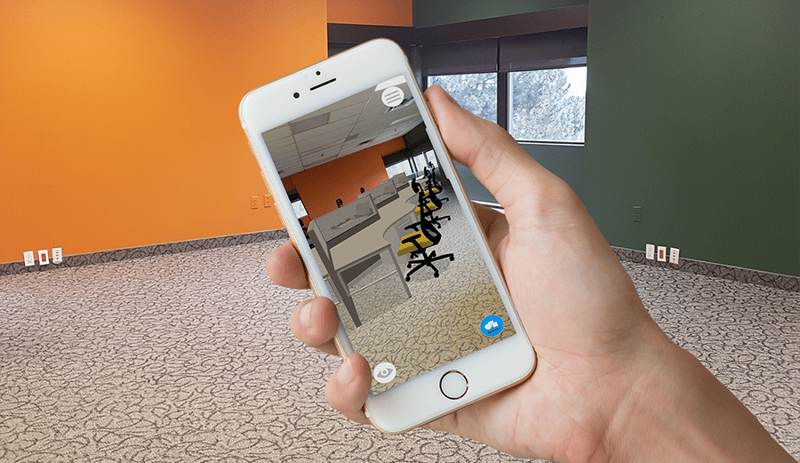Virtual showrooms are attracting a lot of attention these days. With the rise of e-commerce and remote options for clients and consumers, many people are looking for unique virtual shopping experiences that let them engage with products before contacting sales and shopping in person. But how do you make your virtual showroom stand out from the other options available? At KiSP we believe by including virtual and augmented reality tools in our Virtual Showroom products, you can elevate your virtual showroom experience.
In this article, we will show how incorporating Virtual and Augmented Reality tools can elevate your virtual showroom experience and attract more customers.
Understanding Virtual Reality and Augmented Reality
Virtual Reality (VR) and Augmented Reality (AR) are visual storytelling technologies that are revolutionizing the way businesses engage with customers. VR creates a completely immersive experience by transporting users to a virtual environment, while AR enhances the real world by overlaying digital elements onto it. These technologies have gained popularity in recent years across many applications, and businesses are leveraging them to create unique virtual experiences for their consumers.
In virtual showrooms from KiSP, our VR and AR tools enable customers to explore products and services more engagingly and interactively. Our VR tech that is provided by our sister company Yulio allows you to explore the full showroom in VR. This can be done from a desktop, a mobile phone, or even from inside a VR headset. This includes adding hotspots in VR such as images, audio, videos and more. Your showroom viewers can jump from viewpoint to viewpoint and get an accurate sense of your products or space.

AR delivery can also be done with Yulio presentation tools. Any 3D object in your showroom can be converted into an AR object that users can view in their own physical space. This can be done with a mobile phone and is the same kind of tech being used by companies such as Amazon and Ikea. By incorporating VR and AR tools in your virtual showroom, you can create a unique and memorable experience for your customers, setting your business apart from the competition.
Benefits of Virtual Reality in a Virtual Showroom
One of the major advantages of a virtual showroom is the ability to provide customers with a lifelike and immersive experience. VR allows customers to virtually interact with products, explore details, and even simulate real-life scenarios. This level of immersion enhances customer engagement and helps them make informed purchasing decisions. It is the truest essence of “try before you buy”.
Another benefit of VR in a virtual showroom is the convenience it offers to customers. Virtual showrooms can be accessed from anywhere, eliminating the need for physical visits. This is particularly beneficial for customers unable to visit physical stores or located in remote areas. By offering a virtual showroom with VR capabilities, businesses can reach a wider audience and cater to the needs of diverse customer segments.
Our virtual showrooms can be embedded on your websites or even shared with links. It could not be easier for you to share a personalized virtual experience with customers or clients.
Benefits of Augmented Reality in a virtual showroom
Augmented Reality is another powerful tool that can enhance the virtual showroom experience. By overlaying digital elements onto the real world, AR allows customers to visualize products in their own environment. This technology enables customers to see how products would look and fit in their homes or offices before making a purchase. This can instill a better sense of confidence in your clients before they make their decision.

AR also offers the advantage of interactivity. Customers can use their smartphones or AR-enabled devices to interact with virtual objects, try different options, and customize products according to their preferences. This level of personalization and interactivity increases customer engagement and satisfaction, leading to higher conversion rates.
Implementing Virtual and Augmented Reality tools in your virtual showroom
Implementing VR and AR tools effectively in your virtual showroom requires careful planning and execution and our team would be more than happy to assist you. Here are some initial steps for you to consider:
- Assess your objectives with your virtual showroom: Determine how VR and AR technologies align with your business goals. Identify the specific areas of your virtual showroom where these technologies could add the most value.
- Choose the right tools and platforms: Research and select tools that best suit your requirements. Consider factors such as ease of use, compatibility with your existing systems, and support for your desired features.
- Imagine your immersive and interactive experiences: Work with our professionals to develop high-quality VR and AR content for your virtual showroom. Let us know what features you want that will allow customers to explore your products, customize options, and experience real-life scenarios.
- Promote and educate: Once your virtual showroom is ready, get ready to promote it through various marketing channels. Educate your customers about the benefits of using VR and AR in the virtual showroom and provide guidance on how to access and navigate the experiences.
By following these steps, you can successfully implement VR and AR tools in your virtual showroom, enhancing the overall customer experience and driving sales.
Enhancing customer engagement and driving sales with Virtual and Augmented Reality
Virtual and Augmented Reality offer significant opportunities for businesses to enhance customer engagement and drive sales in a virtual showroom setting. One of the key advantages is the ability to create a personalized and interactive shopping experience for customers. By allowing customers to virtually try products, customize options, and visualize them in their own environment, businesses can cater to individual preferences and build a stronger emotional connection with customers.
Moreover, VR and AR tools provide a unique and memorable experience that sets businesses apart from their competitors. By offering a virtual showroom with immersive and interactive elements, businesses can differentiate their brand and leave an impression on customers. Additionally, the convenience and accessibility of virtual showrooms with VR and AR capabilities attract a wider audience.
Want to learn more about KiSP’s virtual showrooms? Schedule a demo with us today or learn more about our other visualization and space planning services.



